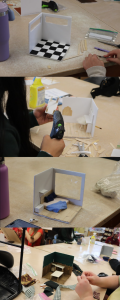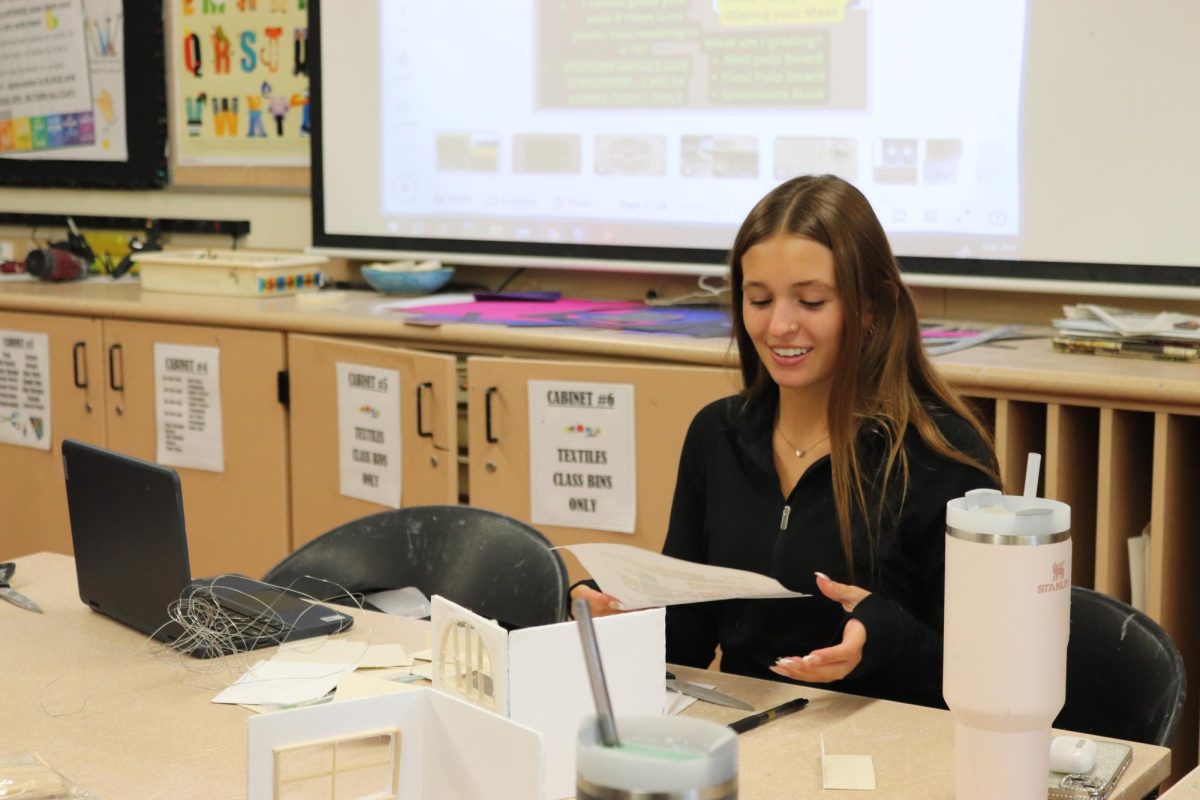Art is a universal language that helps people express themselves in ways that are unique. In Art XXX, students explore sculpture and art history in a mix of projects that use all kinds of different materials and techniques to broaden their art expertise.
Students manipulate clay, wood and glass, along with other materials, to create 3D sculptures. The students use a variety of techniques to create these sculptures. Some of these techniques include casting, assembling and modeling.
The class revolves around art history, appreciation, criticism and aesthetics, as well as implementing a studio experience. Specific emphasis is placed on mass, volume, space and surface media.
By focusing on the history of the art as well as the physical act of creating, students learn more about the artist that is the inspiration for the projects that they do. It also helps them expand their understanding about the importance that art plays in history.
Art appreciation is centered around the ability to look at and understand the meaning behind art as well as noticing the way that art has changed over time. Art criticism is focused on being able to analyze and evaluate art. These both work together to help students see the movement from ancient cultures to contemporary art today.

Liz Lloyd, the Art XXX teacher, is especially excited to be starting her favorite project in this class, one where the students get to design and build their own miniature rooms. She has been teaching this project for years but originally got the idea from Emily Henderson, another art teacher at WHHS. She chooses the projects for the year based on what the students are interested in.
“I like it because the students really get into it, and they do a really nice job,” Lloyd said. “They really focus on a lot of detail and making it look really realistic, as if it were their own bedroom. They do good, and they get to become designers.”
Even though there is a lot of freedom in this class, there is still a process that all of the students follow for every project. They start with a slide show that introduces them to the artist and what they will be doing.
Then the students jump right into planning and starting to create the project.
Currently, the students are onto the creating stage of their current project, making miniature rooms. There are a variety of different rooms that the class is making. Some are opting for a bedroom, while others are doing a kitchen or a dining room.
“You get a lot of freedom in what you want to do,” Emmy Reising, ‘25, said.
Students also like this class because they can show their personal aesthetic and creativity in any of the projects. This makes sure that students can be exposed to other ways of thinking and executing the same project, just in different ways.
“Students are often surprised at what they can create with just a little bit of instruction and a little bit of guidance,” Lloyd said.



